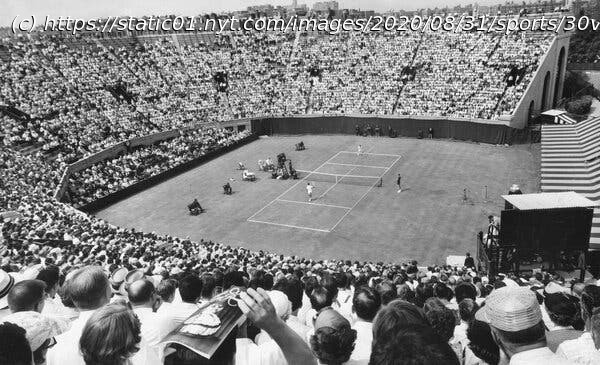The field is considerably diminished because of complications related to the pandemic, but our columnist can tell you about many other Grand Slam draws that lacked the best players of the day.
The United States Open that is set to begin in New York on Monday will be far from full strength, extraordinarily far, but will it really be the Asterisk Open? As of Sunday evening,24 of the top 100 women were missing, including six of the top eight and three of the four reigning Grand Slam singles champions: Ashleigh Barty, Simona Halep and Bianca Andreescu. Though Serena Williams and Naomi Osaka will be in the field, it will have the fewest top 10 players — four — of any U. S. Open since the WTA rankings began in 1975. On the men’s side, only 12 of the top 100 were out as of Sunday, but this will be the first Grand Slam tournament of the 21st century without both Rafael Nadal and Roger Federer. Stan Wawrinka, a three-time major singles champion, will be missing, too. The absences are primarily due to concerns about traveling and scheduling during the coronavirus pandemic. Some stars are still recovering from injuries. Federer, the Swiss superstar, has had two knee operations this year. Andreescu has struggled to stay healthy since winning the Open in New York last year. The bottom line is that this U. S. Open is diminished, but if you want to start affixing asterisks to Grand Slam tennis tournaments with weakened fields, you had best have a big box of asterisks. “It is messy, and it is tricky,” said Steve Flink, an American tennis historian. “There are so many things you can look at through the years.” First, there is the amateur era, which lasted until 1968 and prohibited professionals from taking part in the four major tournaments: the Australian Championships, French Championships, Wimbledon and U. S. Championships. These tournaments became Opens only when they became open to the pros. Until 1968, leading men’s players — like Jack Kramer, Ken Rosewall and Rod Laver — would often turn professional after making their mark in the amateur game, which meant Grand Slam events seldom featured all of the best men in the world, only the best “amateurs,” some of whom received under-the-table payments to help them afford to remain amateurs. The hypocrisy helped lead to change, but it also skewed the record book. Laver, who won all four major tournaments in 1962 and 1969, was ineligible for Grand Slam play for five full seasons in between. Rosewall was ineligible for 11 full seasons. Pancho Gonzales, the charismatic American who won back-to-back U. S. Championships in 1948 and 1949, missed 18 seasons of Grand Slam tennis before returning in 1968 at age 40 to reach the semifinals of the French Open. “There were still a lot of great amateurs, but the public knew who was missing during those years,” Flink said. “They were thinking what would have happened if Gonzales was here? Or Laver or Rosewall? They were missing giants of the game.” That was not an issue in the women’s game, which had no professional circuit. “In women’s tennis, there really should be no distinction between amateur and Open era because everybody played,” said Martina Navratilova, who became one of the greatest champions of any era by winning 167 WTA Tour singles titles, including 18 Grand Slams, and 177 doubles titles.






